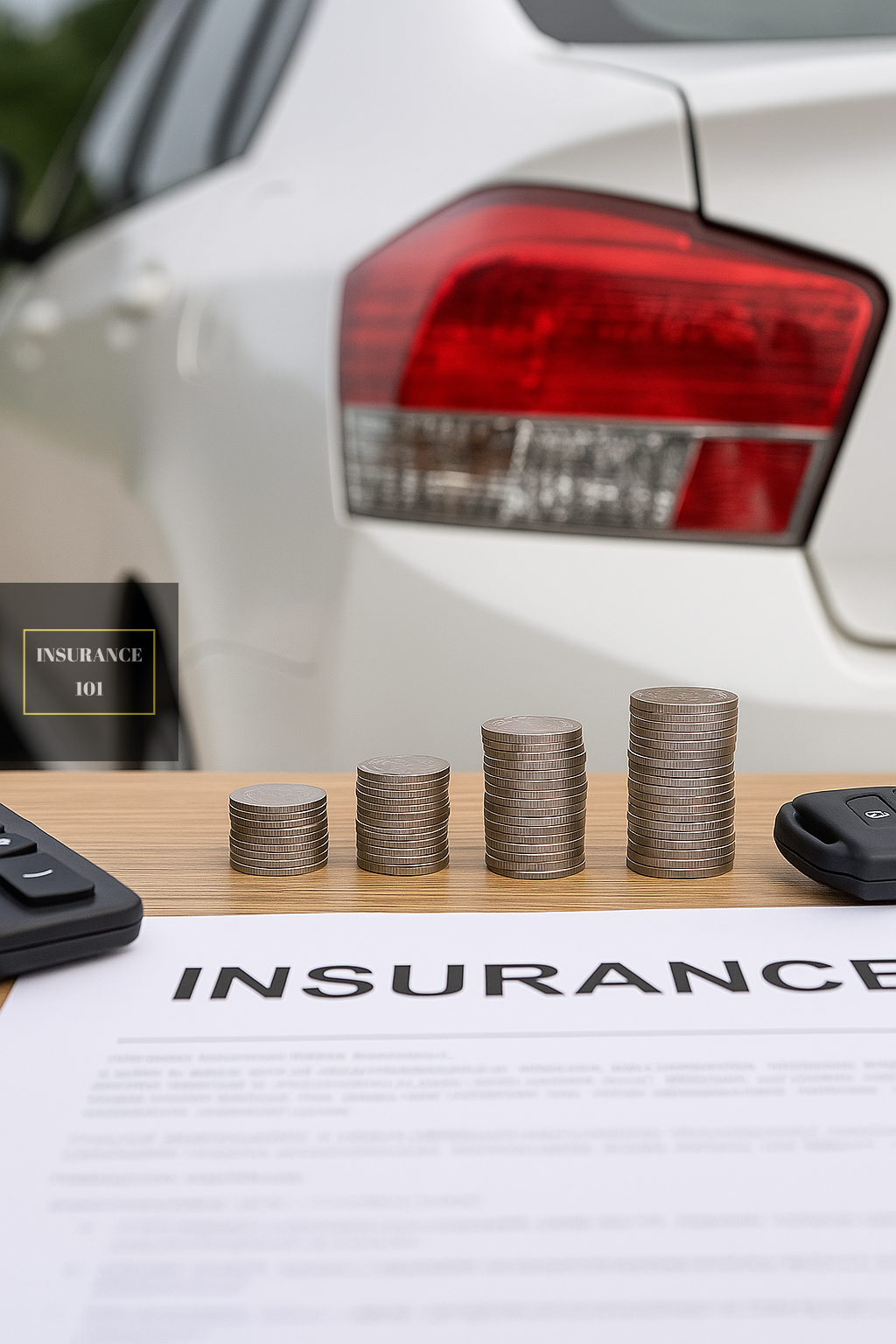Not sure which car insurance to choose in 2025? You Are Not By Alone
You recently purchased an automobile. Well done! The less interesting aspect now is purchasing auto insurance. And if you are like most drivers worldwide, you most likely find yourself overwhelmed with perplexing jargon, limitless policy alternatives, fine print, and changing rates.
According to a recent Policygenius 2024 poll, 58% of worldwide automobile owners said they lacked complete understanding of their auto insurance coverage. Worse still is what is happening. Many discovered they were underinsured just after an accident.
How therefore can one prevent falling into this sad statistic? Whether you’re a novice driver in Nairobi, a company fleet owner in Dubai, or a retiree in Sydney, this one-stop, skillfully written guide will help you select the finest vehicle insurance coverage for your need in 2025 and beyond.
The Knowledge This Guide Will Share
- Well defined key vehicle insurance terminology
- The several forms of vehicle insurance and the protections each offers
- How best to evaluate quotations for vehicle insurance?
- Expert advice and actual case studies
- 2025 future trends to keep an eye on
- A glossary that enable you to speak insurance like an expert
Having worked in the worldwide insurance industry for more than 15 years, I have assisted everyone from international fleet managers to first-time drivers in selecting coverage that actually covers them. Make sure you do as well.
First step: learn about the several forms of car insurance available.
You must know the several kinds of coverage before you start to compare quotations. The most often occurring ones are here:
1. Mandatory in most countries, liability insurance
- Should you be at fault, what covers bodily injury as well as property damage to others?
- For instance, you unintentionally rear-end a stopped car. Medical bills and repairs for another motorist are covered by your liability insurance.
- Recommended recommended coverage amounts
- Minimum: As mandated by your municipal government
- Ideal: At least $100,000 for property damage and at least $300,000 per person / accident Soldier harm.
2. Coverage for Collision Damage
- What it covers is damage to your own car resulting from an object or accident with another vehicles.
- For instance, you might run into a pole reversing. Collision covers the fixes for your vehicle.
3. Coverage All Around
- Non-collision incidents including robbery, vandalism, floods, earthquakes, hail, or fire cover what here is.
- The U.S. National Insurance Crime Bureau reports that car theft climbed by 15% in 2024, particularly in cities like Johannesburg, New York, and Manila.
4. Personal Harm Protection (PIP)
- What covers: Your passengers’ and your own medical bills—regardless of who caused the accident.
5. Under insured or uninsured motorist policies
- What it covers: Should someone strike you with little to no coverage.
Expert Opinion: Why “Cheapest” Isn’t Always “Best”?
Over a ten-year period of working on auto claims worldwide, I have seen too many examples where individuals saved $20 a month and lost $20,000 in claims. Often lacking basic coverage like uninsured motorist or theft, cheap plans Always go over the fine print.
Martin Okonkwo, Allianz Nigeria Claims Advisor
Comparison Table: Types of Car Insurance at a Glance
| Coverage Type | Mandatory? | Protects You From | Ideal For |
|---|---|---|---|
| Liability | Yes | Damage to others | All drivers |
| Collision | No | Accidents with other vehicles or objects | New or leased vehicles |
| Comprehensive | No | Theft, weather, vandalism | Urban or high-risk areas |
| PIP | Sometimes | Your medical costs | Families, daily commuters |
| Uninsured Motorist | Sometimes | Underinsured drivers | Areas with low insurance compliance |
Why You Should Give Your Deductible Some Thought
Before your insurance starts to pay, you pay out-of-pocket a deductible.
Method
Claim Payout = Deductible Less Total Damage
For instance, your insurer pays $2,500 if your deductible is $500 and your repair bill comes at $3,000.
Higher deductibles translate into smaller premiums; but, with a claim, more out-of-pocket expenses.
Think over your local hazards and laws.
More than you would believe, your location counts. Laws both national and even subnational control insurance.
- Third-party insurance is required of Kenyan citizens.
- All automobiles imported into the UK have to have at least third-party coverage.
- Every state in the United States decides its own criteria.
Global Insight: Comprehensive coverage is not optional in flood-prone areas including Lagos, Mumbai, and Jakarta; it is absolutely required.
Insurance Trends to Track 2025
Particularly with data and AI developments, car insurance is changing rapidly. This is the evolving situation:
- UBI, or usage-based insurance
- Propelled by telematics
- Logs your driving behavior (speed, braking, mileage).
- Less expensive drivers are safer.
- Stat: Over thirty-two percent of all auto insurance policies worldwide will have telematics. By 2026 this figure should reach 48%.
- AI-Driven Claims Processing
- Anticipated are instant photo analysis, real-time app-based claims, and settlement under 24 hours.
- Embedded Policy
- Point-of-sale insurance is being provided by vehicle dealerships, rideshare companies, and auto applications, so simplifying the process of combining your coverage with a car purchase.
Embedded Insurance: The $500 Billion Revolution in Point-of-Sale Coverage
Effective Comparison of Car Insurance Policies
One looks past the price tag.
- Find out what is left out.
- Does it address tow-through?
- Regarding natural events, what comes first?
- Ask for a Sample Policy.
- For several drivers, road trips, etc., this lets you scan exclusions, restrictions, and premium changes.
- Sort Apples Comparatively to Apples
- Always compare like coverage, deductible, and policy terms.
Real-life Case Study
Situation: Sarah, Nairobi, Kenya (2024)
Only carrying third-party insurance, Sarah had a 2018 Toyota Vitz. She realised she wasn’t protected for “acts of God” when flash floods destroyed her engine beyond repair. She finally paid KES 550,000 for repairs.
Lesson: If natural disasters are frequent in your area, third-party coverage could be less expensive but financially catastrophic.
How Much Should You Pay for Car Insurance?
Global Average Premiums in 2024 (Annual)
| Country | Average Premium (USD) |
|---|---|
| United States | $1,668 |
| United Kingdom | $875 |
| Kenya | $410 |
| Germany | $710 |
| UAE | $935 |
| India | $205 |
Source: OECD, Statista, IRDAI, AKI (2020 Reports)
Your quotation will be derived from your location, car model, age, driving record.
Expert Interview: What to Search For in Insurers
We evaluate your lifestyle as much as the worth of your car. Every day commuter from the city? That carries great risk. Rural automobile kept in a garage parking space? Reduced rates. One size does not fit all.
— Emilia Rausch, AXA Germany’s underwriting manager
Advice for Saving on Vehicle Insurance by 2025
- Combine vehicle with house or health insurance in bundles.
- Drive safely to avoid claims aiming for a No-Claim Bonus (NCB).
- Install anti-theft devices; some policies provide savings.
- Compare annually: Loyalty hardly always results in lower prices.
- Select an insurer with a worldwide network especially for foreign drivers and expats.
Link Building: Beneficial Tools
- World Bank – Motor Vehicle Counts
- OECD Insurance Reports on Road Accidents
Last Words: Don’t Gamble with Your Car Insurance
Selecting appropriate auto insurance goes beyond only fulfilling legal obligations via box-tipping. It is about safeguarding your peace of mind, money, and future. Understanding your needs, making wise comparisons, and following 2025 trends will help you to invest in risk management rather than only purchase insurance.
Save this guide and review it anytime you are renewing your coverage or helping a friend. And go to Insurance-101.com for additional globally applicable insurance advice.
Glossary of Insurance Terms
| Term | Definition |
|---|---|
| Liability Insurance | Covers damages you cause to others in an accident. |
| Deductible | The amount you pay out-of-pocket before insurance covers a claim. |
| Comprehensive Coverage | Insurance for non-collision-related damage like theft or natural disasters. |
| Collision Coverage | Covers damage to your car from an accident involving another vehicle or object. |
| PIP | Personal Injury Protection, covers medical expenses regardless of fault. |
| Telematics | Technology that monitors your driving habits to determine premiums. |
| Uninsured Motorist | Coverage for accidents involving drivers without insurance. |
| No-Claim Bonus (NCB) | Discount offered for not filing any claims during a policy period. |




3 thoughts on “Selecting the Ideal Vehicle Insurance Policy for Your Requirements”